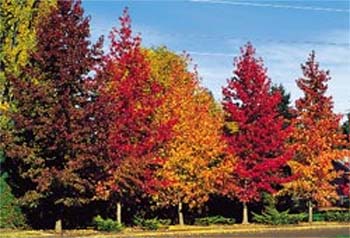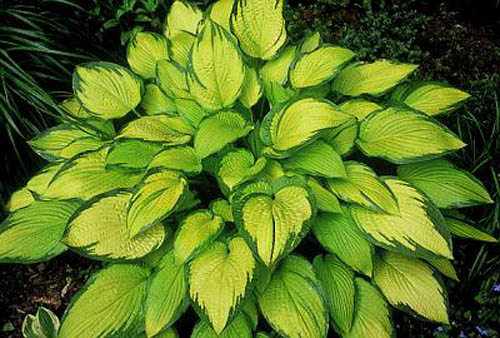Well, here it is fall again in the gardens. It just seems like yesterday we were all sitting around the kitchen table watching the spring rains washing away the last traces of winter’s snow. Their are just so many tasks we still must do before winter shows itself again. Flowers to be dried, nuts and berries to be harvested, roses to be winterized, and tender plants to be potted and brought in. We have been using more containers in the garden the last few seasons. Container gardening allows you to grow plants in places where in-ground gardening is not practical or possible, such as patios, terraces, balconies, decks, porches and rooftops. Since container gardens are portable, you can simply move the containers to a frost free location. We usually manage to bring in a few spiders, crickets, toads and an occasional chipmunk.
Gardening in containers is ideal for people with limited garden space or a lack of time for gardening. Containers provide splashes of color throughout the yard and can be planted with mixtures of flowers, herbs and vegetables. Need some color for that evening patio party? Simply move in the container plants. A little more rearranging and you have a bright cheery nook for the morning brunch. Stack them on blocks, bury them in the ground, hide them away in the permanent plants, their use is only limited by your imagination.
Gardening in Containers is an exciting option for those who:
- Have small spaces for gardening.
- Want colorful accents to place around the home or apartment.
- Cannot comfortably kneel or bend.
- Have limited mobility.
- For busy gardeners, cooks, plant lovers.
Thanks to containers, just about anyone can have a garden. Even apartment dwellers without a garden plot nurture miniature flower beds in window boxes safely secured to sills and ledges. Container-grown succulents and small trees are also likely to be moved from here to there, filling gaps as the season progresses. In island beds, a single antique urn becomes an eye catching centerpiece; smaller pots and recycled containers, on the other hand, look best displayed in groups, near the base of an outdoor staircase.
These days, the choice of containers is limited only by a gardener’s imagination. Graniteware basins, food-storage tins, shoes, baseball caps, and a host of other flea-market finds look no less charming than a costly hand blown glass container. We still like the old time hand thrown clay pots for our garden, they seem to have a charm of their own. No matter what your container choice is, all pots must have good drainage. Without it, roots rot and plants die.
Do not use garden soil for containers! Even the best garden soil is not the right choice for container growing. They will not provide adequate drainage and contain disease organisms, bacteria, and weed seeds. Garden soils also compact into heavy masses, preventing root respiration and fertilizer absorption. Your mix should be light and airy. It should retain moisture and nutrients and be quick to drain. To reduce root rot problems, use the same mix throughout the pot. While you can mix your own, we would suggest using a commercial mix such as Redi-Earth or Jiffy Mix. Unless you use large amounts or enjoy working with different soils it is just easier and more economical to purchase a mix. A good list of soil recipes, soil blends or potting soil recipes can also be found at the Backyard Gardener’s site at http://www.backyardgardener.com/soil.html
Plants in containers need frequent watering. They may require several waterings a day during very hot weather. Soil in containers dries out much more rapidly than soil in the garden. The best way to decide when to water is to check every day by inserting your fingers into the top few inches of soil. Clay or terra cotta containers dry out faster than plastic containers, with baseball caps and sneakers somewhere between. Moisture retenders can be added to the soil that grab and hold large amounts of water molecules and then slowly release it. They greatly increase the moisture retention of the soil without clogging it up. They are available under a range of brand names, such as “Water Grabber.” In very dry locations you can put one container inside another larger container and pack the space between with gravel, dry peat, or perlite to slow loss through the sides of the pot.
Container plant roots cannot grow deeper or spread out in search of food. You must compensate for their smaller root area by feeding them more frequently. Use a well-balanced fertilizer such as “Miracle Gro,” or “Rapid Gro.” Organic gardeners will have fine results with a combination of manure tea or fish emulsion and liquid kelp. Be sure that whatever fertilizer you use, it is well-balanced and contains not only nitrogen, phosphorus and potassium, but essential trace elements as well. Shepherd’s Seeds has a wonderful informative web page on container gardening at http://www.shepherdseeds.com/library/grow_guides/containergdnggs/containergdnggs.html that we recommend going to.
We always dread having to bring in all the house plants and other container grown plants, there just never seems to be enough room. Of course, it does not help that not only have the numbers increased through the years but, our collection now includes a few trees. Then again, as we look out over late winters’ landscape, dull and grey, it is good to have some green things around.



